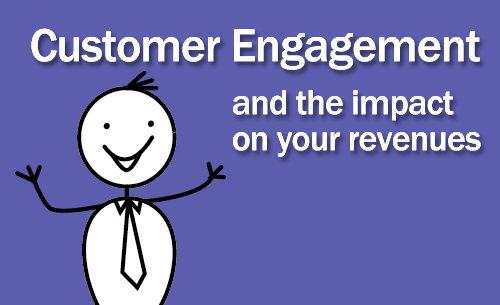The growth of customer engagement – and the impact on your revenues

Delivering the right service, products and overall experience has always been central to building a successful business. Companies know that retaining existing customers is far cheaper than winning new ones, and have built systems and processes to ensure that they can provide what customers want cost-effectively.
This trend has been accelerated by two key factors. The recent recession made consumers much more wary about spending money, increasing competition across all markets. And customers are now much more demanding and connected – they will not tolerate poor service and will research and check every purchase, reading reviews, asking contacts on social media and searching for relevant news stories before they commit.
Customers therefore increasingly look to buy from companies that they feel engaged with at an emotional level. As research company Gallup points out, customer engagement - which it describes as “a customer's emotional or psychological attachment to a brand, product, or company” - is therefore at the heart of business growth. Industry analyst Gartner agrees, recommending that organisations replace their contact centres with Customer Engagement Centers (CEC), that provide the technology, processes and people to underpin customer engagement.
Gallup’s Customer Engagement Score (CES) is based on three questions:
- Company X always delivers on its promises
- I feel proud to be a customer of Company X
- Company X is the perfect company for people like me
Based on responses to these questions, Gallup categorises customers into three groups:
- Fully engaged – emotionally attached and rationally loyal to a company
- Indifferent – neutral towards a company both emotionally and rationally
- Actively disengaged – ready to switch brands and share poor experiences with others
Gallup finds that there is a strong correlation between engagement and profitability. A fully engaged customer represents a 23% premium when it comes to revenue and profitability, compared to a 13% discount for their actively disengaged counterparts. Actual results vary by industry, but in the US Gallup’s research discovered that fully engaged customers delivered 37% more annual revenue to their bank when compared to the actively disengaged. For example, in the insurance sector fully engaged policy holders bought 22% more types of products than the actively disengaged.
At Eptica, we’re seeing this need for greater engagement and an improved customer experience driving increased sales for our innovative, linguistic-powered customer engagement software. We have just announced record quarterly revenues, with Q2 revenue up 30% on the same period in 2013, accelerating the success of Q1 2014.
During our last quarter, Eptica signed new customers in the retail, banking, telecoms and public sectors, including Transport for London (TfL) - Capita, as well as Crédit Agricole, BforBank, Phonehouse and the Ministère de l’Education Nationale in France. In Asia-Pacific, we are expanding staff numbers in its Singapore office to meet growing demand.
Additionally the strength of Eptica’s technology and approach was recognised by Gartner, which positioned the company in its 2014 Magic Quadrant for the CRM Customer Engagement Center. The sole European company in the report, Eptica was one of only two vendors to transition with the same product from the retired Magic Quadrant for CRM Web Customer Service (WCS) Applications. This marks the fourth consecutive year that we have appeared in a Gartner Magic Quadrant.
Gallup’s research demonstrates the growing importance of customer engagement, as companies see the financial benefits of building strong relationships that underpin their entire operations. Now is the time to act and put in place the right strategy, technology, processes and training. This will not only retain existing sales, but will also safeguard future revenues through happier, fully engaged customers.







Comments